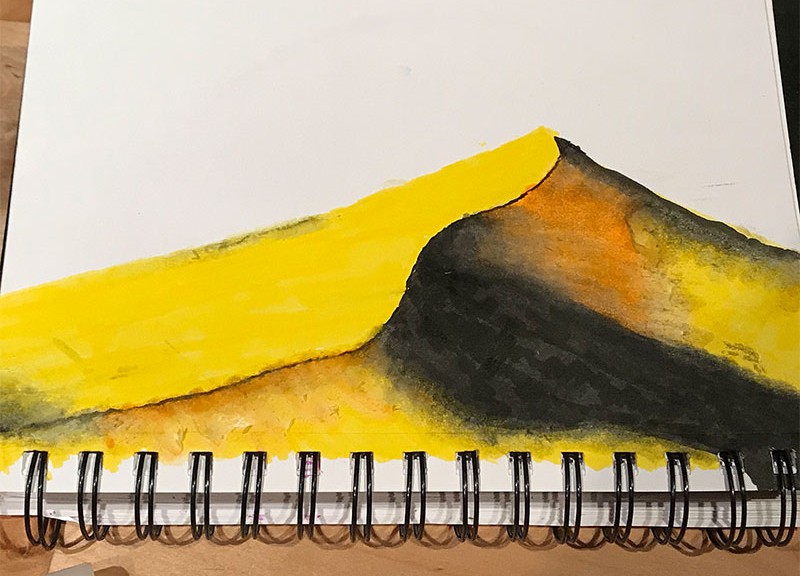As we welcome new Level 1 students to Drawing Lab sessions, our courageous Level 3 sketchers continue to lead the way, forging ahead to explore the possibilities of realistic and abstract drawing.
In the above drawing of a sand dune, youth student Jesse ventures out of his comfort zone to learn blending techniques of colorful Tombow pens. The realistic ridge of the dune is defined by a curved contour edge. Bold highlights and richly layered shadows show 3-dimensional form of the massive dune.
But we also become intrigued with Jesse’s experimental process of blending ink colors. We begin to share his fascination with orange, yellow, and black ink commingling with the paper’s surface. The line between realism and abstract drawing is blurred, and we are enthralled with Jesse’s subjective experience with materials as much as the image of the sand dune itself.

Whether your aim is to carefully draw an accurate depiction of your subject or to quickly express an emotional feeling about it, drawing is a collaboration between the world around you and your imagination.

After many hours of practice, you can push the boundaries of your skills and challenge the notions of what drawing means to you. Should you explore representational or non-representational compositions? Is your interest in objective or subjective figure drawing? Are you a realist or abstract artist? Both? These kinds of questions begin to surface as you set the stage to take your work to the next level.


The pathways you choose to explore are extended from the observational skills learned in Level 1 drawing sessions. Techniques learned in Level 2 can shape your style of drawing. And your confidence as a Level 3 sketcher can open doors to proficiency in the visual languages of Realism and/or Abstraction.



Much of what we do at the Scribbles Institute is about experimentation—that’s why we call our group sessions Drawing Lab. As you progress through lessons on accuracy and expressiveness, drawing becomes a deeper personal experience. Devotion to practice breathes vitality and originality into your work. As your confidence enables you to flow from realism to abstract drawing, your deepest pleasure will be derived from simply trusting the process.





And then there is Surrealism; a way of drawing that is somewhere between realism and abstraction…



Rob Court
Latest posts by Rob Court (see all)
- Drawing With Friends - April 11, 2022
- Frozen in Time: Cellphone Users as Models to Draw - April 8, 2022
- Getting Out & Getting Real - June 20, 2021
- Life Lines: Sketching the Unseen World of Movement - June 20, 2021
- The Ups & Downs of Urban Sketching - May 9, 2021
